
Written by: VC Popcorn
Summary Introduction
-
This article is an academic article, aiming to explore the operating logic, value of digital currencies and their subjects in economic activities and their impact on the macro economy.
-
Transfer of economic power:Investment or speculation in digital currencies actually reflects people’s pursuit and desire for economic power.
-
The impact of monetary technology on economic power:On the surface, the change in monetary technology dominated the transfer of monetary power, but before the advent of blockchain, this process was driven more by political power and military forces.
-
The core issues of digital currency:P2P transfer technology reshapes the existing economic power structure with its decentralized characteristics, but it does not solve the triad problems of traditional finance. Its essence is still transfer technology, not real currency.
-
Conclusion:Some “investment institutions” advocate that Bitcoin is the currency of the future, showing a lack of common sense in economics because Bitcoin is not suitable as a unit of daily trading.
01. Introduction
This article is an academic discussion article, we have done a lot of academic research and reference; No investment advice or related content is involved.The article mainly analyzes the technical characteristics of digital currencies represented by Bitcoin and deeply discusses its role, influence and value in the macro economy.And further analyze the underlying operating logic of the Web3 world and provide theoretical support for it.
02. Currency Evolution and Transfer of Economic Power
2.1 The evolution of currency and the bearing of trust
As a medium of transactions, storage and calculation unit of value, currency carries the trust and commitment between all parties inside and outside the society.HoweverThe demand for the role of money by economic activities is constant, but the form of money is iterated with the development of technology and society.From the earliest shells and metals to today’s paper money, they have different forms, but they are constantly evolving to meet human needs.Money is not only a medium of economic activities, but also a reliable technology that enables commitments between economies to be realized.With the complexity of social and economic activities, monetary technology is also constantly developing.
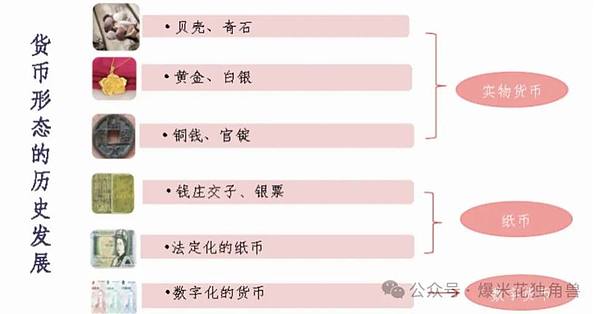
2.2 Transfer of economic power
What is economic power?In the words of economist Richard Cooper, economic power is the ability to apply economic means to punish or reward the other party (Eichengreen, 2022).This capability is usually the result of its economic scale, and it is also the basis for economic growth.Economic strength is related to the purchasing power of the country.Purchasing power is determined by the strength of the national currency.For example, the US dollar is currently considered to be the most powerful currency, so that other countries use it as an emergency backup currency for central banks.In 1920 and 2008, we all saw the global economic crisis caused by the collapse of the dollar’s value.
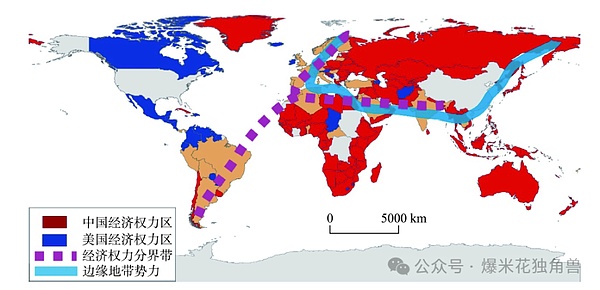
Digital currency is the latest stage of currency technology.Digital currencies led by Bitcoin seem to offer an opportunity to give ordinary investors the economic power, a view that Bitcoin is another form of central bank.They believe that digital currency technology is not only to solve the economic efficiency problem, but more importantly, it impacts and reshapes the power relationship in the existing economic field.
This is also why governments in all walks of life and countries regard digital currencies as a disaster in the early days, and now they have to be forced to accept them and need to actively embrace them, because the top-level design of digital currencies is directly related to the influence of all parties in economic competition.Therefore, we would like to explore the dynamic relationship between digital currency development and economic power in depth.
03. The impact of monetary technology on economic power
3.1 Monetary technology and trading efficiency
Past history has told us that the emergence of currency has greatly improved the efficiency of transactions, while the advancement of currency technology is mainly used to serve transaction efficiency (Jenkins, 2014).Under the premise of “trust”, both parties to the transaction usually choose the most efficient currency as the medium of transaction.Therefore, the innovation and application of monetary technology have a profound impact on the economic structure and thus change the distribution of economic power.In other words, the dominant players of economic activities are usually the masters of the most advanced monetary technology.
As we know, the earliest emergence of currency was to solve the need for “double coincidence” in ancient transactions, which is the main problem faced when trading through exchange of goods (i.e. bartering) in a currency-free economy in a major economy.Both parties need to have exactly the goods required by the other party to be able to complete the transaction (O’Sullivan& Sheffrin, 2003).
This trading method is inefficient and limits the size and scope of the transaction.The introduction of precious metal currencies greatly simplified this process (Crawford, 1985), making economic activity more fluid and wider.The monetary technology during this period was relatively primitive, and the value of the currency depends on the value of the precious metal itself.However, it is relatively inconvenient to carry and trade precious metals. Secondly, the scarcity and production cost of precious metals such as gold and silver are much higher than that of general trade goods.
Therefore, the world economy needs a portable and low-produced emerging currency. The invention of paper money and the use of bank notes were major advances in monetary technology. It first appeared in the Song Dynasty of China (Moshenskyi, 2008), and later spread to Europe, and was greatly influenced by the sacred state of the country.Improve the efficiency of currency circulation.
Given the paper money system, Britain developed a complex banking and credit monetary system in the 17th century (Richards, 2024), which promoted the industrial revolution and expanded its economic and military global influence.
From the late 20th century to the early 21st century, the emergence of electronic currency and electronic payment systems (such as credit cards, electronic transfers) further innovated monetary technology (Stearns, 2011), which improved the efficiency of the financial market and enhanced the country’s economic control.For example, the US financial system and the global dominance of the US dollar benefit in part from its centrality in global payment systems such as the SWIFT system (Gladstone, 2012).
3.2 Power promotes monetary innovation
There is no doubt that every new currency technology emerges as an improvement on previous currency inefficiency.But this does not explain why people are willing to accept this “currency” that has no production value as a medium of transaction, which is the premise of “trust” mentioned above. Who will provide or guarantee trust?
In fact, the change in the form of money is not just a technological iteration in economic activities. Most often, it is a choice for the party holding power in commercial activities and maximizing its own interests. However, this choice just coincides with the development of technology.Usually, the party with stronger technological capabilities also holds more power in business activities.In other words, the party controlling power provides security, or represents security, whether through advanced weapons technology or advanced monetary technology.
For example, between economies.
India used shells as base currency from the Neolithic era until Britain began colonizing India in the 18th-19th century, and the East India Company launched paper money in 1812 (Tanabe, 2020) in order to better control the Indian economy and facilitate tax collection.These notes were initially optional and were not mandatory for public use; by 1861, the Paper Currency Act was passed (Lopez, 2021), which established the Company Rupees as the legal tender for India.This means that all public and private debts must be settled in corporate rupees, becoming the only statutory means of payment.
This iterative upgrade of monetary technology did not get welcomed by the Indian people because it conformed to the objective laws of history. On the contrary, it increased the dissatisfaction of the local people.Paper money strengthened the British government’s economic exploitation of Indian people and made more convenient levies; these dissatisfactions eventually converged into wider protests and resistance activities (Tanabe, 2020).
Ultimately, the Indian people were forced to accept advanced paper money, which was based on a compromise on advanced military technology, rather than a recognition of the advanced nature of monetary technology.This is exactly the same as the current world economic situation. The technological and military attributes of the US dollar are indispensable. The combination of the two ensures its financial attributes, thus achieving the security and convenience of trade.
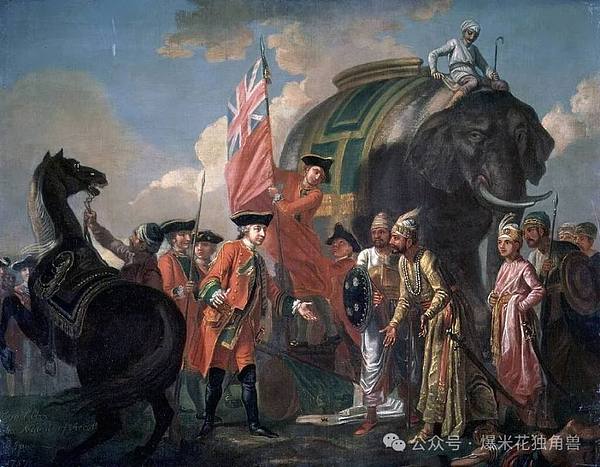
(III) Success and failure of technology to promote the transfer of monetary power
Secondly, within an economy, the party that masters technology often challenges the original power leader, successful cases such as credit cards, This is the innovation of technology and business models that disperse the power of the money supply from the government to the hands of private financial institutions.
The original credit card system was launched by Diners Club in the 1950s, and subsequently brands such as Visa and Mastercard launched their own credit card products (Stearns, 2011).These cards allow consumers to make purchases without instant cash payments, which promise to repay debts at some point in the future.
From a technical perspective, credit cards have not directly changed the money supply (i.e., the central bank-controlled money supply indicators such as M1 and M2), because credit cards actually create a “credit currency” or form of borrowing, rather than actualmoney supply (Stearns, 2011).However,Credit cards do play a currency-like function in actual economic activities, affecting the circulation of currency in the economy through credit creation.This reflects the dispersion of power and function in the modern financial system (Simkovic, 2009).
Failed cases, for example,Long before Bitcoin emerged, for example, in 1983, David Chaum, a cryptographer and pioneer of digital privacy, proposed theBlind signature technology(Chaum, 1983).Blind signature is a form of digital signature in which the content of the message is hidden from the signer before it is signed (Chaum, 1983).This means that the signer can sign without knowing the content of the message, but after signing, it can verify the authenticity and integrity of the message.
The blind signature system invented by David Chaum was originally intended to serve large financial institutions or government agencies, which helped increase transparency in data processing without sacrificing privacy.However, early distributed accounting techniques such as such were designed based on the common assumption that there is an authority, such as a traditional retail bank or a central intermediary such as a central bank.Therefore, these proposals have been miscarried because they cannot avoid centralized authority (Tschhorsch, & Scheuermann, 2016).
In summary, monetary technology can affect economic structure and thus economic power, but the promotion and popularization of monetary technology also rely heavily on the support of the power party in the existing economic system.Monetary technologies before blockchain technology all need to rely on strong government authoritarianism to be expanded.
04. Challenges and helplessness of blockchain technology to economic order
4.1 Bitcoin: Resistance to the Centralized Economy
Bitcoin, which appeared in 2008, made a complete resistance to the centralized economic phenomenon and order. It was born from dissatisfaction with the traditional financial system, that is, dissatisfaction with the financial system controlled by the central government, and was a global financial crisis.Social response (Nakamoto, 2008).Its core proposal is to establish a decentralized economic system, abandoning intermediary institutions such as central banks (Joshua, 2011).This is not only a response to the financial crisis, but also a technical commitment to overcoming obstacles to digital currency development (Marple, 2021).
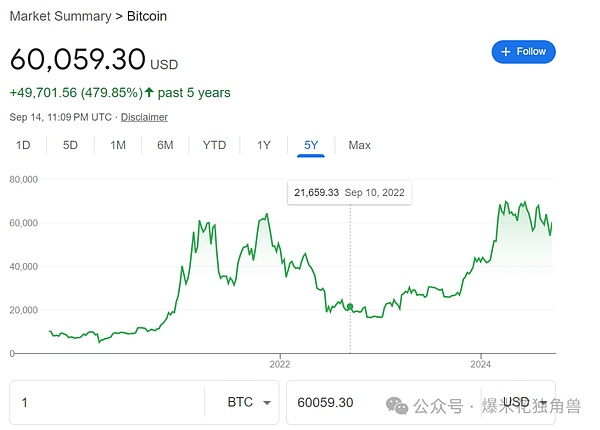
The blockchain technology created with Bitcoin also encountered a lot of doubts from the technology circle in its early days.After withstanding countless hacking attacks, its security has truly been recognized by the technology circle (Reiff, 2023).
Hackers have found that blockchain technology can really complete peer-to-peer transactions across the ocean without any intermediary or permission, and in this process, its transaction results cannot be tampered with (Reiff, 2023).This is also the first time that a monetary technology itself provides enough trust instead of relying on centralized power, or this technology has realized trustless and permissionless for the first time.P2P transactions.Therefore, blockchain technology has built a brand new currency species, digital currency (Nakamoto, 2008).
4.2 The rise of altcoins and the competition for technological innovation
Based on blockchain technology, a large number of altcoins have emerged rapidly since 2011, maintaining the decentralized technical characteristics, but there are differences in the application of blockchain technology. These altcoins achieve social and economic goals in different ways.(Halaburda & Gandal, 2016).
In the altcoin ecosystem, we can clearly see the relationship between technological innovation and iteration of transaction efficiency, whether it is through the iteration of consensus protocols (such as POW, POS and POS), or the increase in the elasticity of the main network through Layer2, it is all about increasing transaction efficiency (Halaburda & Gandal, 2016).At the same time, we found that digital currency decentralizes and de-powers the traditional financial world. However, within them, everyone is playing Game of Thrones, and various altcoins are constantly iterating or bragging about iterating their own digital currency technology, thusThe throne of power continues to strike.
As a result, ICO (initial token issuance) came into being. In 2013, Mastercoin was the world’s first ICO, but the ICO of Ethereum Eth in 2014 was more well known (HackerNoon.com, 2019).Companies preparing for ICOs usually publish a development roadmap that indicates that they need to raise funds to develop the most advanced digital currency technology, or develop and strengthen their crypto ecosystem, etc.ICOs allow companies or organizations to provide crypto tokens instead of stocks to raise funds, which usually do not provide company ownership, but allow buyers to profit from the success of the company and use these tokens to purchase products or services (Hargreaves,2013).A lot of times,These ICOs are managed more centrally by issuing companies, in other words, authority is in the hands of the issuing companies rather than completely decentralized.
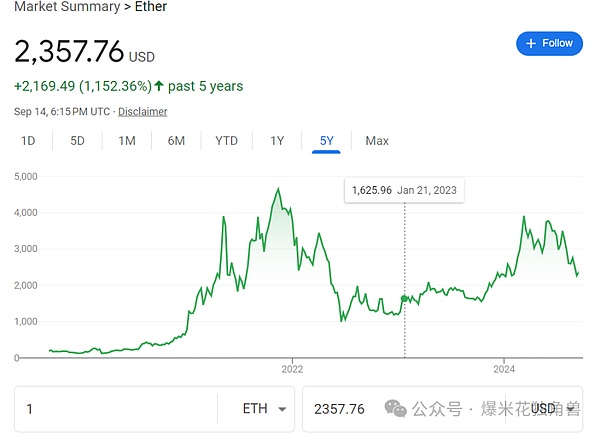
In addition, the design of ICO is aimed at the company’s value, which means that buyers expect the company to continue to create value, continuously iterate technology, and expand the ecosystem (Hargreaves, 2013).Unlike Bitcoin itself, everyone’s expectations for the value of Bitcoin come entirely from consensus, and users do not expect Bitcoin as an organism to evolve new additional value.
ICO is beyond the digital currency defined by Bitcoin itself, and it becomes aAlternatives to securities(Hargreaves, 2013).So in 2021, when Sam Bankman-Fried, like the US SEC, proposed that digital currencies should be managed and compliant in a completely different way than securities, it was immediately rejected (SEC document, 2022), because no one could say it at that time.It is clear, what is the difference between the two in this angle.
In fact, digital currency and securities are an opposite and dialectical relationship.Securities is more about buyers’ expectations of the future profits of the issuing company, while digital currencies are more about coin holders’ expectations of the issuing party’s power and status trends in the digital currency field, which is different from the fundamental analysis of the traditional financial field.What ICO investors value more is that this company can continuously improve its technological advancement and technological influence, which will later evolve into ecological influence.This influence is usually unquantifiable at the current stage of digital currencies and there are no clear standards.Most investors must be forced to be logically self-consistent, self-argument, and ideally, assuming that economic activities around the world should be traded in a state-of-the-art currency, because the efficiency is the highest and the cost is the lowest.The issuer’s profit growth trend is also conceivable.
4.3 The competition between stablecoins and economic power
So we saw the birth of stablecoins, and the emergence of USDT in 2014 (Cuthbertson, 2018), which maintains a stable price relationship with the US dollar, thereby reducing price fluctuations in the digital currency market.In this way, stablecoins such as USDT try to make transactions of digital currencies go through it, thus standing at the C position of digital currencies.Thanks to the stability brought by stablecoins, decentralized finance and centralized digital currency transactions have both developed vigorously.Here, the relationship between efficiency gains and economic power is clearly visible.
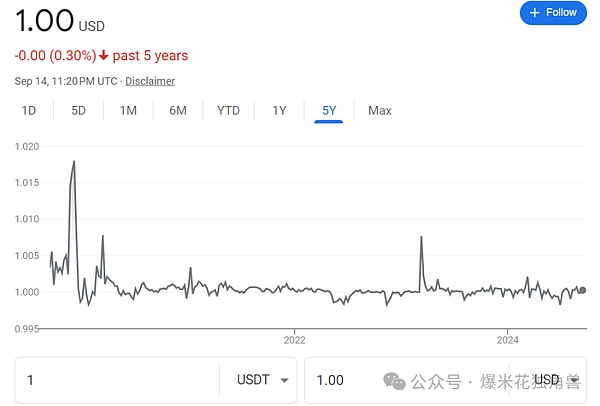
Many people would think that stablecoins, such as USDT,Letting the influence of digital currency still anchor the traditional currency is a technological regression, so algorithmic stablecoins appear.The room will not be expanded for the time being.From another perspective, central banks in various countries have seen a new opportunity for power expansion through stablecoins, that is, they can sit on the iron throne of the crypto world through stablecoins.
Central banks around the world are piloting sovereign digital currencies, better known as Central Bank Digital Currency (CBDC).A recent survey by the Bank for International Settlements shows that more than 70% of central banks are actively conducting research on their own CBDCs, and China’s cryptocurrency is one of the most well-known CBDC programs (Barontini& Holden, 2019).
It is worth noting that many countries have relied on digital currencies to evade international sanctions, and are also carrying out central bank digital currency projects to achieve this goal more effectively (Barontini & Holden, 2019).Typically, strong governments exercise nonviolent forces through fiat currencies, especially in international relations.By controlling currency, governments can influence the economic activities of other countries and individuals (Barontini& Holden, 2019).Especially in international sanctions, for example, if Country A wants to impose economic sanctions on Country B, it can be achieved by cutting off Country B’s connection with the SWIFT system, while Country B’s financial institutions cannot access the international financial market.
However, digital currencies challenge this inherent rule. If Country B develops its own central bank digital currency (CBDC) and establishes a direct crypto trading channel with other countries, Country B can bypass the restrictions of the SWIFT system and reduce sanctionsThe impact ofThis shows that CBDC helps reduce the control of some countries in international financial flows, thus undermining the rules of traditional economic sanctions.This confirms againDigital currencies have greatly weakened the power structure within the existing economic system.
Overall, we see an important link between monetary technological advancement and economic power pursuit, whether in fully decentralized digital currencies, corporate ICOs or government-produced stablecoins.
05. Thinking about the rules of digital currency operation
I think all people who are exposed to digital currency will think about this question, what is the use of digital currency and how to use it.Or what are the rules for the operation of digital currency? By mastering these rules, can I make a fortune?
Today I still can’t help you make a fortune, but I can explore the underlying logic of the operation of digital currency. There are three issues that I think are the most important, and these three issues are also the most concerned issues of traditional financial institutions.1. What is the value of digital currency? 2. What mechanism is the price of digital currency controlled and affected?3. What is the impact of digital currency ledger technology on traditional financial behavior?
5.1 What is the value of digital currency?
I think it is usually four types.
The first is the transaction value itself (Nakamoto, 2008), as a trading tool,Therefore, its fast and decentralized characteristics can enable some transactions that cannot be achieved in traditional finance to be realized through digital currencies.
The second value is speculative value (Gronwald, 2019), such as Bitcoin, because of its limited attributes, it makes it more like a commodity than a currency.
The third type is anchored (Dell’Erba, 2019), such as stablecoins,They are bound to the value of an actual asset.
The fourth type is function-based (Golem. 2020), such as privacy coins,Users use privacy coins to keep transaction information on the blockchain confidential; for example, various coins can be used to use services of a certain blockchain network, such as purchasing GPU services with ionet coins.
The first valueyesSovereign states are working to control and actively combatobject.
The second valueA huge speculative and speculative market was born, forFinancial regulators do not allow, Related warnings are emerging one after another.
The third valueFound a natural belonging in the banking industry and thus fell into itBanking Regulationscope of the institution.
The fourth valueIt spreads in corporate financing,Regulation of Securities Law.
5.2 What mechanism is the control and influence of the price of digital currency?
The price of digital currency is closely related to its supply management mechanism, which is no different from traditional fiat currencies.
For sovereign legal currency,Control prices through supply control mechanism, Sovereign governments affect the confidence and liquidity of currency in economic activities by issuing or destroying currency (Fenu, Marchesi, Marchesi & Tonelli, 2018).Here we will talk about a trivial problem that traditional monetary policy usually encounters, also known asThe Impossible Triangle in Economics, refers to the three main goals a country faces when formulating monetary policy (Lawrence & Frieden, 2001):Stable exchange rate, free capital flow, and independent monetary policy.These three goals are usually difficult to achieve at the same time, and countries must choose between them.

If a country chooses a fixed exchange rate and allows capital to flow freely, it will be difficult for it to maintain an independent monetary policy.This is because a fixed exchange rate requires a country’s monetary policy to be consistent with its major trading partners or currency anchors to maintain exchange rate targets.At the same time, free flow of capital will allow market forces (such as speculation) to put pressure on fixed exchange rates, which may force countries to adjust their monetary policies to maintain exchange rate stability (Lawrence & Frieden, 2001).
If a country chooses an independent monetary policy and allows free flow of capital, it will be difficult to maintain exchange rate stability.In this case, central banks adjust interest rates or money supply to achieve domestic targets, such as fighting inflation or stimulating the economy, which may lead to inflows or outflows of capital, which can affect exchange rates (Lawrence & Frieden, 2001).
If a country chooses an independent monetary policy and maintains exchange rate stability, it may need to limit the free flow of capital.This is because freedom of capital flows may put pressure on exchange rates, thus conflicting with the state’s independent monetary policy (Lawrence & Frieden, 2001).
The best example here is,China has chosen a relatively independent monetary policy and a stable exchange rate.Eurozone countries choose exchange rate stability and free flow of capital (Lawrence & Frieden, 2001).
Some digital currencies also show this supply logic of central issuance (Jani, 2018), such as Ripple (XRP).A large number of Ripple coins have been created before public offering through pre-mining. Ripple management companies will increase or decrease the number of Ripple coins circulating in the market as needed to maintain the cost and efficiency of cross-border transfers, thereby achieving the goal ofPrice control (Jani, 2018).Although this supply control strategy can help stabilize prices, it also introduces the risk of centralization. Similar to the issuance and adjustment logic of traditional fiat currencies, Ripple will inevitably face the impossible triangle in economics, especially individual companies.The ability to resist risks is much lower than that of sovereign states, and hyperinflation may occur once they encounter a debt crisis.
Another way is algorithm supply (Yermack, 2015). Unlike central issuance, algorithm supply relies on preset rules to automatically control the generation and issuance of digital currencies.These rules are compiled into the code of blockchain without human intervention (Yermack, 2015).Bitcoin is a classic example, with a fixed cap of 21 million supply and is expected to reach this cap around 2140 (Nakamoto, 2008).This preset supply rate makes Bitcoin’s supply predictable, but it also makes it more sensitive to market speculation, resulting in greater price fluctuations.Despite high price volatility, the characteristics of algorithmic supply, such as the predictability of supply, make such currencies very useful in transactions.Traders can predict their performance relative to other currencies based on known supply patterns of these currencies, thereby conducting strategic trading.
In summary, in the digital currency field, central issuance mechanisms allow for more flexibility in managing prices and supplies, but may cause credibility issues, as market participants may be concerned about abuses of central power, such as the occurrence of hyperinflation.on the contrary,Algorithm supply (such as the fixed upper limit of Bitcoin) provides a high level of predictability and transparency, increasing the credibility of the currency, but sacrificing rapid response to market changes.
5.3 What is the impact of digital currency ledger technology on traditional financial behavior?
The design of blockchain distributed ledger technology is a great innovation in traditional ledger technology (Nakamoto, 2008). Whether the digital currency ledger is public or private, its role in economic relations and the acceptance of regulatory agencies.It also has significant impact.
In public ledgers, the responsibility for accounting is scattered among a large number of end users, forming a decentralized governance structure; anyone can view and verify transactions in the ledger, so public ledgers are usually regarded as moreTransparent and decentralized (Nakamoto, 2008).In contrast, private ledgers have a more centralized responsibility structure, usually carried by an organization.This means that the cost of account management is concentrated in one organization or group of actors, rather than spread throughout the network.
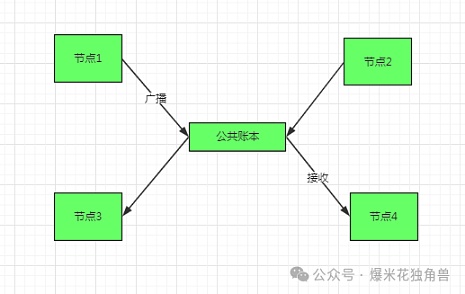
Because public ledgers lack centralized regulatory objects, regulators need to monitor more participants, and thus ruthless injunctions and warning measures may be taken to manage the digital currency market (O’Dwyer & Malone. 2014).While private ledgers are managed by specific organizations, regulators can more easily conduct specific governance responses because they can communicate and cooperate directly with these organizations.For example, traditional banks’ ledgers are usually centralized, meaning that all data and transaction records are stored on the bank’s internal server.Relevant government departments only need to restrict and manage banks.
Bitcoin chose public ledgers because it is a decentralized digital currency that emphasizes the decentralization of finance and currency (Nakamoto, 2008).This bypasses the traditional banking model, where cross-border remittances and large transactions usually involve complex intermediaries and high handling fees, and also bypasses effective government supervision.This has led to more stringent measures by regulators to manage their markets.This shows that the development and adoption of digital currencies are not only technical choices, but also involves power games and decision-making at multiple levels, including politics, economy and society.
06. Conclusion
Digital currency is the latest stage in the history of currency development.Digital currency Crypto Currency, Crypto encryption technology represents its technological attributes, while Currency represents its currency attributes.
Its technological attributes are perfectly reflected as a payment tool,He solved many problems that traditional banking industry could not solve.Through its global distributed ledger system, it can achieve fast and direct cross-border transfers, greatly reducing transaction costs and time without intermediary and approval.However, most monetary technologies must be supported by centralized economic power parties before they can develop. Blockchain technology can flourish for the first time without the permission of vested interests, and directly attack the traditional economic interest order.Within digital currencies, countless altcoins are also launching attacks on the inherent economic structure (Bitcoin, Ethereum) within digital currencies, trying to compete for the throne, by constantly iterating technology.Therefore, although the endless ICO coins do not generate cash flow in the short term, investors seem to see the huge value they will generate for trading efficiency in the future.
However, if digital currency is regarded as a currency itself, the economic and political problems it faces are not much different from traditional fiat currency.Problems encountered in traditional economic activities, such as the Impossible Triangle, have not been solved in the field of digital currency.Based on this, we also discovered that in this crypto world that advocates decentralization, it emphasizes and worships orthodoxy, which is centralized, centripetalized, and even superstitious, and is not only technological.The attributes go against each other, and this phenomenon is exactly the same as the traditional world’s obsession with power, and ignores the laws of science.
That’s why some crypto institutional investors would absurdly but proudly advocate that Bitcoin is equivalent to the central bank, and the operating models of other digital currencies are comparable to those of the country, demonstrating their ignorance of economic knowledge.








